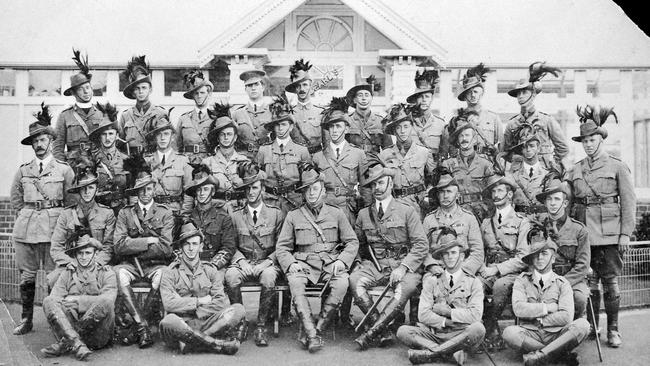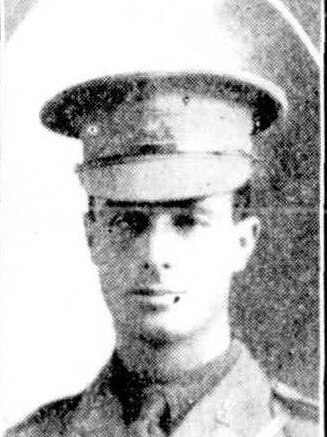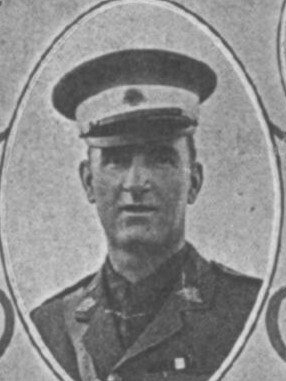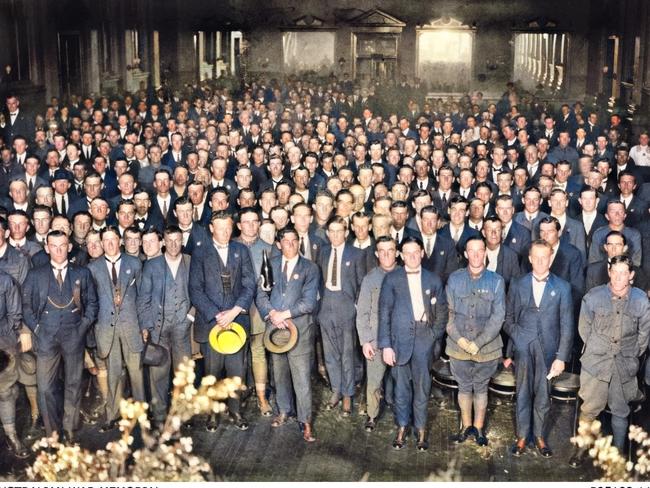Incredible stories of eastern suburbs Diggers told for the first time
They were four boys from the east who boarded for Egypt at the outbreak of WW1 — but not all would go to plan and not all would return home.

Wentworth Courier
Don't miss out on the headlines from Wentworth Courier. Followed categories will be added to My News.
- Key Wentworth election issue supported by Sharma and Phelps
- Gas leak forces evacuation of Woollahra pub
In June of 1915 four eastern suburbs men from an elite division of the Australian Imperial Forces embarked on a journey of a lifetime.
The men from the 12th Light Horse Brigade were to head to the middle east and then to Gallipoli to help reinforce the fledging troops there.
Each man would experience very different fates.
In this special ANZAC Day edition of The Wentworth Courier, we pay tribute in living colour to the soldiers from our region who bravely fought during the First World War.
The photograph of the 12th Light Horse Regiment which graced our cover was generously provided by the Australian War Museum, and coloured by Wentworth Courier artists.
Its exact date is unknown but is believed to have been taken pre-departure.

In the second back row, second from the end, Lt Alexander Frank Buskin from Double Bay and four from the end, Lt Harold William Baker from Coogee were two of the fresh-faced boys from the east who boarded the HMAT Suevic and the HMAS Vestalia for the arena of war.
Seated in the front row, Major John Ellesmere Westgarth from Elizabeth Bay and second row standing at the far left, Captain John Bingham Higginson from Darlinghurst, were older, and more experienced and may well have appreciated the challenges the men were facing.
Considered one of the elder statesman of the group of lads in their 20s at 38, Major Westgarth had experience fighting in the Boer War in South Africa at the turn of the century and knew the horror that potentially awaited them.
A year after they left Sydney, Westgarth made it back to Australia in one piece but tragically died in 1918 after he was discharged from the AIF.

A member of the prominent Westgarth legal family, Westgarth had left a promising law career for the military, quitting his studies at the Sydney University, Indeed, the 12th Light Horse Regiment was a group with strong ties to Sydney’s legal community.
The Regiment’s commander Percy Phipps Abbott was a solicitor, as was Robert Hunter and law student Alistair Wharton Cox.
Abbott’s own legal affairs were handled by Westgarth’s half-brother George’s Pitt St law firm Westgarth and Co, which in turn maintained war graves in the years after the conflict.
As every Australian schoolchild knows, the outbreak of WW1 was met with euphoria as the fledgling nation looked for a chance to prove itself on the world stage and show its allegiance to Great Britain which had declared war against Germany.

It would have been easy to understand why young lieutenants Harold Baker — a 26-year-old physical culturalist from Coogee — and clerk Alexander Buskin left with great hope, the cheers from the thousands in Sydney’s farewell march still ringing in their ears when they boarded.
Their next stop was supposed to be Egypt but as would become starkly apparent military plans can be deeply flawed.
The boys were forced to disembark and leave their horses in Adelaide after just four days at sea over fears of the animals would die travelling at that time of year.
Soon, another, change of plan, the 12th Regiment would be diverted to Aden, Yemen.
Arriving on shore, the soldiers were ordered to conduct a 9km reconnaissance march where they were expecting an Ottoman attack which never came.
On arrival in Egypt they began intense training and guard duties, before being sent to Gallipoli.
It was there that 26-year-old Alexander Buskin was killed, struck by a Turkish shell at Ryries that claimed the lives of three others.
He is the only one of the four to not come home to the eastern suburbs.
Captain John “Jack” Higginson left behind wife Mabel at their 61 Roslyn St home to go to war.
The 41-year-old Captain, a journalist and son of a Queensland cattle station manager, 41, who had also served in South Africa, returned home in May 1917 and went on to build an established career as a poet, publishing more than 80 works prior to his 1939 death.


